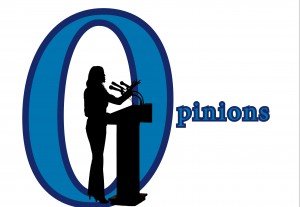On Feb. 20, recreational marijuana stores had to turn in the taxes they collected from the first month of sales. Initial estimates of the taxes collected show that they could add more than $100 million to state coffers, which are far higher than previous estimates by a long shot. This new revenue stream shows that effective marijuana regulation can put much-needed money into the state government, all while taking cash away from drug lords and other dealers. It is an important indication that effectively regulated pot can be a boon and not a threat to not only Colorado, but states across the country.
Generally, Colorado is a state with lower than average taxes, but voters approved a tax of 25 percent on the newly legalized recreational marijuana. A tax rate at fully a quarter of sales revenue (a rate higher than even the smothering hotel taxes in Manhattan) brings in a lot of revenue, which is what this first collection day has demonstrated.
The reason is simple: There are a lot more people who the market is open to. There were 110,000 medical marijuana patients in Colorado, but Amendment 64 legalized pot for millions of Coloradans, everyone 21 and over. Budget proposals from Governor Hickenlooper’s office estimate that the state’s recreational pot industry could reach up to $610 million in annual sales, which combined with the medical pot industry could result in as much as $1 billion in sales.
In his budget proposal, the governor sees as much as $134 million in tax revenue for the state from recreational and medical marijuana for the fiscal year that begins on July 1. By law, the first $40 million has to go to school construction, but beyond that, it will be added to the state’s coffers.
Of course, while keeping money out of the hands of drug lords is generally agreed upon, trusting the state government with an influx of cash is something fewer people are inclined to do. However, Hickenlooper proposes spending $99 million of the projected revenue in several ways: on efforts to prevent pot use by children and teens ($45 million), substance abuse treatment programs ($40 million), public health ($12 million), anti-stoned driving campaigns and pot store regulation enforcement. These programs will work to address some of the side effects of legalization that many expect will come to pass.
Any additional revenue will serve to reduce state budget deficits and repair bottom lines. This can only be good for the citizens of the state, having cash from pot sales serving the public good rather than lining the pockets of a smuggling operation.
Although recreational shops have not yet opened in Washington State, budget estimates there project that sales could bring in up to $190 million in tax revenue for the four years starting in July of 2015.
Legalization is something that is bound to have many positive results and inevitably, some negative side effects. There are still many studies to be done and effects to analyze. But with the first stream of revenue from recreational pot sales already flowing to the state generating higher than expected revenues, it shows the potential legalization has to dedicate hundreds of millions of new dollars to the public good. Keeping money out of the hands of criminals and in control of public servants is something almost everyone can agree is a step forward.










